u-blox Introduces Tiny Multi-GNSS Module

Swiss-based u‑blox launched its new EVA‑M8M stand-alone positioning module today (November 6, 2014), bringing concurrent multi-GNSS capabilities into the company’s compact EVA footprint.

Swiss-based u‑blox launched its new EVA‑M8M stand-alone positioning module today (November 6, 2014), bringing concurrent multi-GNSS capabilities into the company’s compact EVA footprint.
Technology to counter the threat of GNSS jamming is now available at Dover and along the east coast of the United Kingdom as the island nation continues to implement an enhanced Loran (eLoran) system that is setting an example for the world.
By Inside GNSS
The European Satellite Navigation Competition (ESNC) has gone Big Time.
Unlike past years, when product designers and engineers from small- and medium-sized enterprises (SME) have walked away with the top prize, this year’s overall winner was Airbus Defence & Space (Airbus DS GmbH), a division of the Airbus Group (formerly EADS). Headquartered in France and generating annual revenues of €14 billion, Airbus DS was established last year by the merger of the parent company’s Airbus Military, Astrium, and Cassidian units.
By Inside GNSSThe IGNSS 2015 symposium on GPS/GNSS and industry exhibition will take place at the Outrigger Hotel in Gold Coast, Queensland, Australia from July 16 to 18, 2015. The conference venue is one block from the famous Surfer’s Paradise Beach.
The deadline for abstracts is February 9, 2015.
Registration will be open at the end of March, 2015. Early bird registration ends May 18, 2015.
By Inside GNSSA confluence of technology, policy, and applications is turning indoor venues into the next big frontier for positioning and navigation.
Recent market studies have heralded the prospects for positioning, navigation, and tracking inside buildings where GNSS signals are often attenuated or blocked entirely. Many products and conceptual designs combine the indoor technologies with GNSS to provide “ubiquitous” positioning.
By Inside GNSS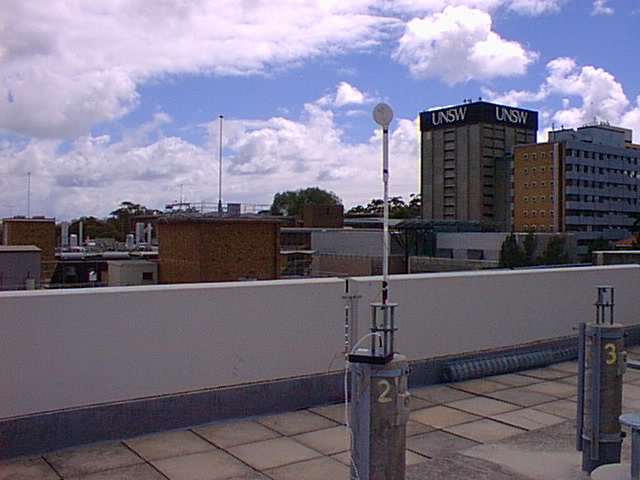 GPS pseudolite used in experiment at University of New South Wales Satellite Navigation and Positioning Lab
GPS pseudolite used in experiment at University of New South Wales Satellite Navigation and Positioning LabInternational aviation officials have asked U.S. experts to consider updating standards for GNSS aviation receivers to improve their ability to withstand interference from repeaters, pseudolites, and jammers.
Repeaters — generally used to extend navigation signals inside buildings where they would otherwise be blocked — rebroadcast GNSS satellite signals and therefore operate in the same frequency band. Although useful within a building, care must be taken to confined the repeater’s signal lest it confuse other receivers operating nearby.
By Inside GNSS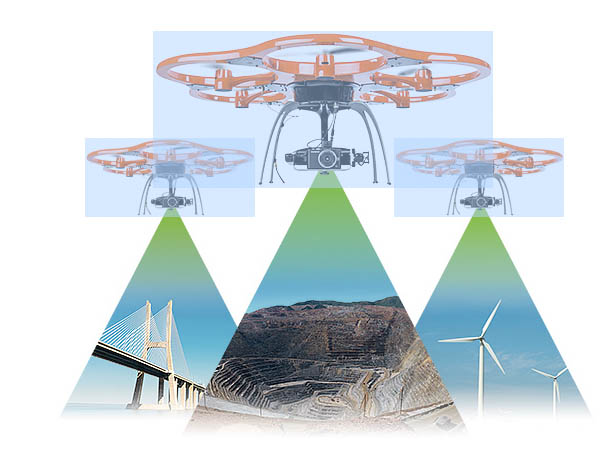
Unmanned aerial vehicles (UAVs) are getting a lot of attention this week at the INTERGEO conference and exhibition in Berlin, Germany, where a special session on Tuesday (October 7, 2014), “UAVs in Practice,” focused on their use in airborne surveying and mapping, environmental monitoring, and other commercial or civil applications.
By Inside GNSS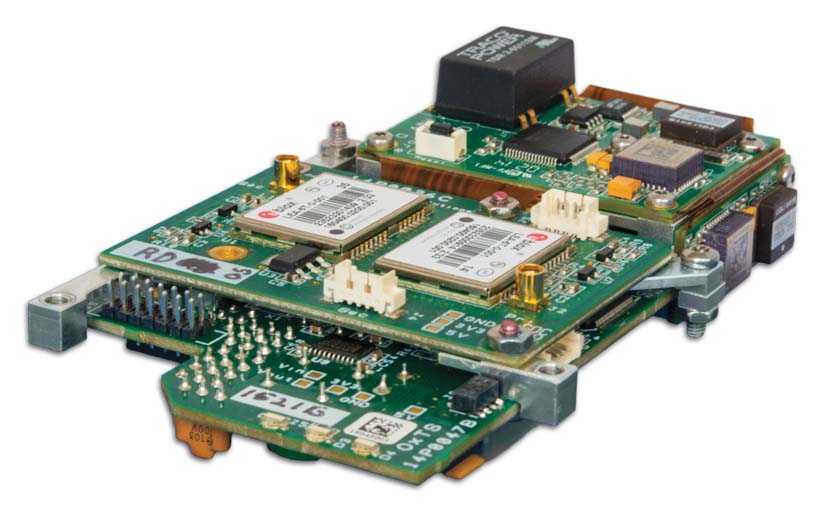 xOEM500
xOEM500Oxford Technical Solutions Ltd. (OxTS) has announced its first inertial navigation OEM board set with integrated GNSS — the xOEM500, which the company is promoting at this week’s (October 7–9, 2014) Intergeo trade show in Berlin, Germany.
By Inside GNSS One of 12 magnetograms recorded at Greenwich Observatory during the Great Geomagnetic Storm of 1859
One of 12 magnetograms recorded at Greenwich Observatory during the Great Geomagnetic Storm of 1859 1996 soccer game in the Midwest, (Rick Dikeman image)
1996 soccer game in the Midwest, (Rick Dikeman image)
 Nouméa ground station after the flood
Nouméa ground station after the flood A pencil and a coffee cup show the size of NASA’s teeny tiny PhoneSat
A pencil and a coffee cup show the size of NASA’s teeny tiny PhoneSat Bonus Hotspot: Naro Tartaruga AUV
Bonus Hotspot: Naro Tartaruga AUV
 Pacific lamprey spawning (photo by Jeremy Monroe, Fresh Waters Illustrated)
Pacific lamprey spawning (photo by Jeremy Monroe, Fresh Waters Illustrated) “Return of the Bucentaurn to the Molo on Ascension Day”, by (Giovanni Antonio Canal) Canaletto
“Return of the Bucentaurn to the Molo on Ascension Day”, by (Giovanni Antonio Canal) Canaletto The U.S. Naval Observatory Alternate Master Clock at 2nd Space Operations Squadron, Schriever AFB in Colorado. This photo was taken in January, 2006 during the addition of a leap second. The USNO master clocks control GPS timing. They are accurate to within one second every 20 million years (Satellites are so picky! Humans, on the other hand, just want to know if we’re too late for lunch) USAF photo by A1C Jason Ridder.
The U.S. Naval Observatory Alternate Master Clock at 2nd Space Operations Squadron, Schriever AFB in Colorado. This photo was taken in January, 2006 during the addition of a leap second. The USNO master clocks control GPS timing. They are accurate to within one second every 20 million years (Satellites are so picky! Humans, on the other hand, just want to know if we’re too late for lunch) USAF photo by A1C Jason Ridder.  Detail of Compass/ BeiDou2 system diagram
Detail of Compass/ BeiDou2 system diagram Hotspot 6: Beluga A300 600ST
Hotspot 6: Beluga A300 600ST

1. STOP THE CAR!
Las Vegas, Nevada USA
Aviation officials Thursday (September 25, 2014) for the first time approved the use of unmanned aircraft for commercial filming in the United States, opening the door to what is expected to be a slow-building gold rush to the skies.
Six companies received exemptions from the existing rules, which generally ban the commercial use of unmanned aerial systems or UAS. The exemptions were granted to RC Pro Productions Consulting LLC dba Vortex Aerial, Aerial MOB LLC, Astraeus Aeria, HeliVideo Productions LLC, Pictorvision Inc., and Snaproll Media LLC.
By Inside GNSS Gerald Mader, National Geodetic Survey
Gerald Mader, National Geodetic SurveyIn August, a group of scientists at the Scripps Institution of Oceanography reported that the severe drought gripping the western United States in recent years is causing a “uplift” in the western United States.
About the same time, governmental agencies were reporting widespread cases of land subsidence in California’s central San Joaquin Valley caused by overpumping of water from wells there.
By Inside GNSS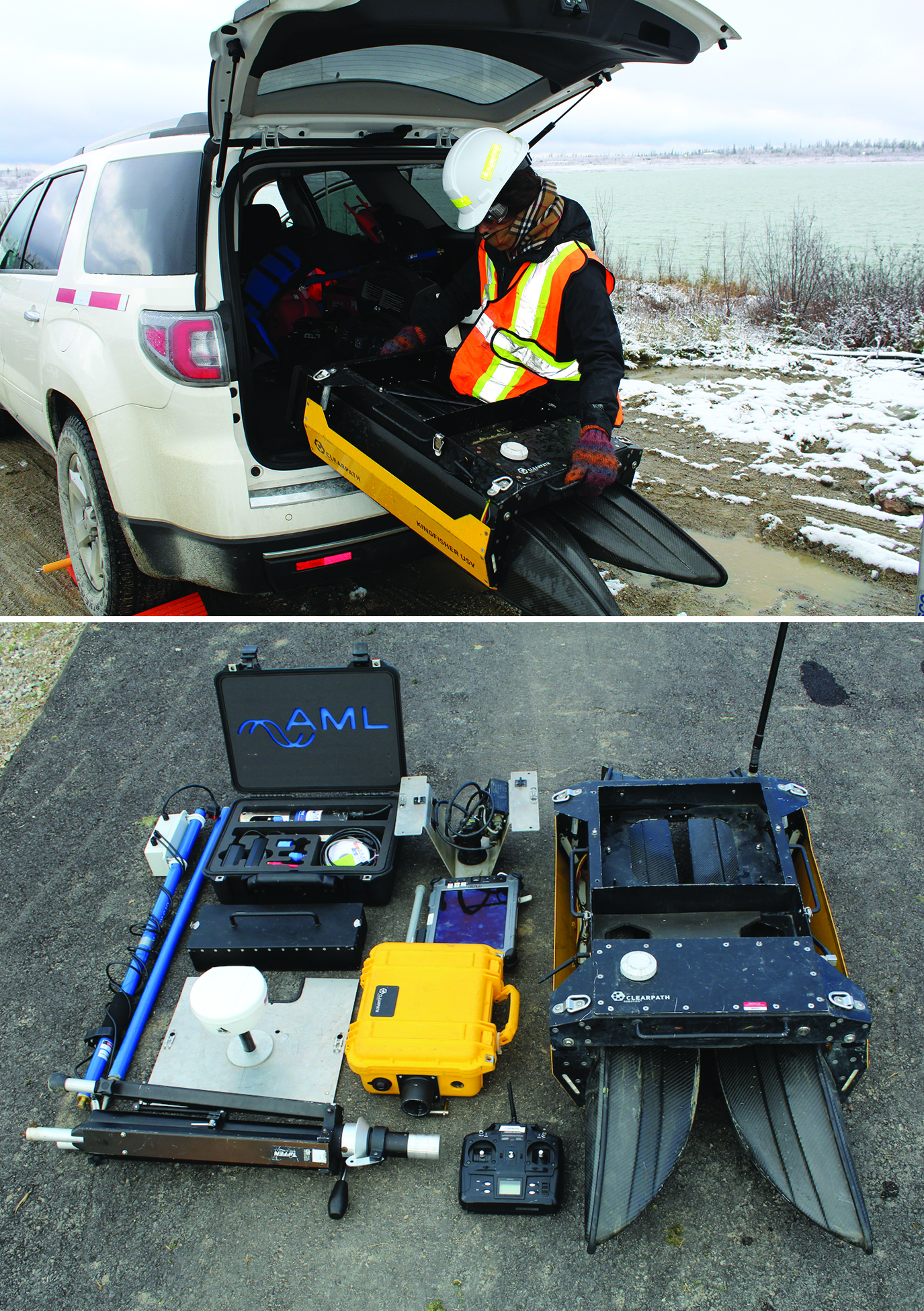 Eugenia Acosta, an intern with Clearpath Robotics, unloads a Kingfisher unmanned vessel in preparation for a mission (top photo), the Kingfisher components and controller (bottom photo).
Eugenia Acosta, an intern with Clearpath Robotics, unloads a Kingfisher unmanned vessel in preparation for a mission (top photo), the Kingfisher components and controller (bottom photo).“Our products are robotic research platforms,” says Clearpath’s Meghan Hennessey. “These can be configured and programmed so that our customers can explore their particular areas of interest without all the cost and troubleshooting involved in actually building robots themselves.”
Hennessey says Clearpath platforms — which include the all-terrain Husky, the larger, tractor-like Grizzly and the waterborne Kingfisher — can be thought of as project kits.
By Inside GNSS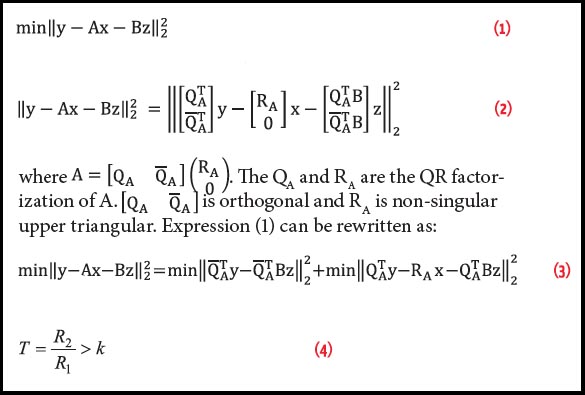
Q: How do you trust centimeter level accuracy positioning?
By Inside GNSS